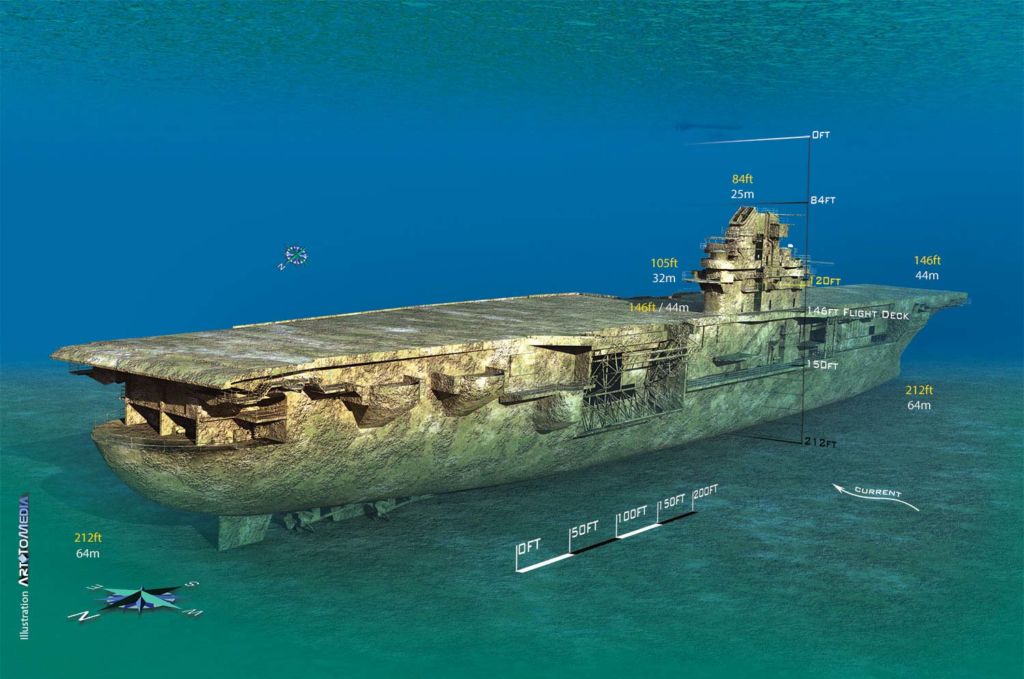
ArtToMedia 3-D Map of the Oriskany
Bigger is Better
The superlatives don’t even come close: the world’s largest artificial reef, the Mighty O, the Great Carrier Reef.
The USS Oriskany — the 911-foot granddaddy of purpose-sunk wrecks — is a national treasure for American divers. Scuttled exactly 10 years ago, in May 2006, the former Essex-class U.S. Navy aircraft carrier was launched in 1945, and survived action during the Korean and Vietnam wars before finding its final berth in 212 feet of water 22 miles south of Pensacola, Florida.
It’s one of three divable aircraft carriers in the world — along with the USS Saratoga at Bikini Atoll and the HMS Hermes in Sri Lanka — but unmatched in size and history. Oriskany is a bucket-list dive for wreck lovers, but due to its immense length (the main deck is over three football fields long), towering profile (the tower alone is 62 feet tall) and serious depth (even the flight deck is beyond recreational limits), it’s not an adventure to be taken lightly. You wouldn’t climb Mount Everest on a whim. And you shouldn’t attempt the Mighty O without specific practical and time-earned advice from those who know it best: the locals.
READ NEXT: 21 Best Places for Scuba Diving in Florida
“It is massive,” says Kerry Freeland of Dive Pros Pensacola. According to the veteran instructor who has made more than 60 dives on the wreck: “The most common reaction for first-time Oriskany divers is awe. Most have never been on a wreck so large, and with so much to see, it never gets old.”
“I love its scale,” says Florida Department of State underwater archeologist Franklin Price. “It is larger than life, and there is a special excitement that comes with seeing something that is one-of-a-kind.”
Prepare to Be Amazed
For Price, the experience is equal parts awe and joy.
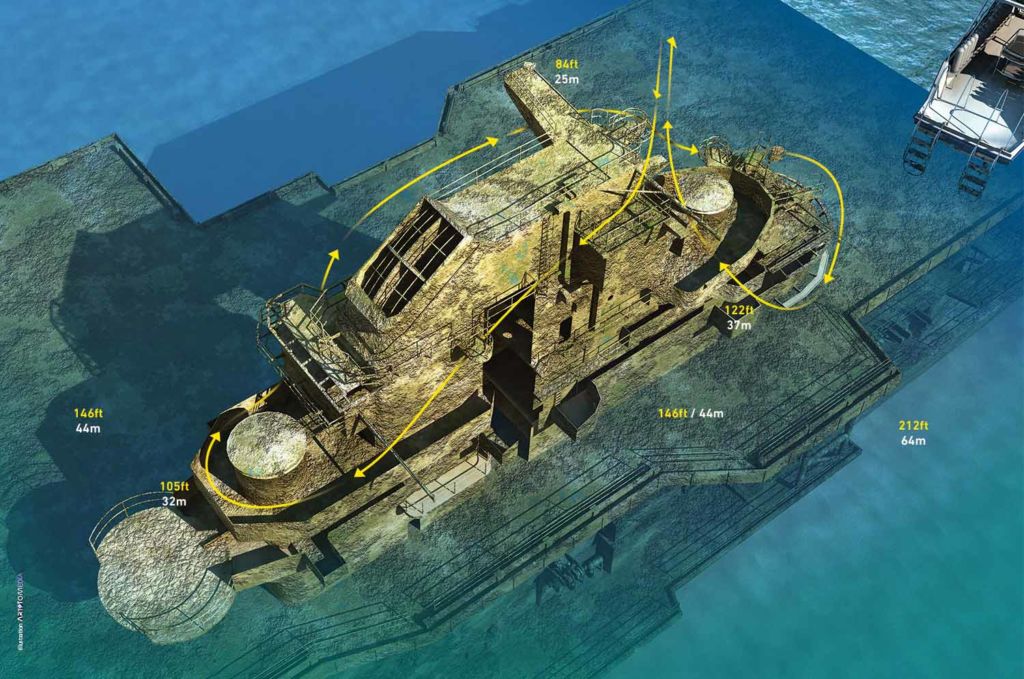
“One’s first dive to the control tower, called ‘the Island,’ is unforgettable,” he says. “For recreational divers it can be intimidating, but for most, once they are on the wreck itself, that gives way to wonder. Watching it materialize out of blue water on the way down is breathtaking.”
“The superstructure was prepped for divers,” Freeland says. “The vast majority of insulation and wiring were removed so as not to create entanglement hazards. Many doorways were welded open, and some additional egress points were cut into many of the rooms of the superstructure, all in an effort to make the superstructure safer for divers.”
Oriskany has also become a beacon for marine life, which frequents the wreck in large numbers — and sizes.
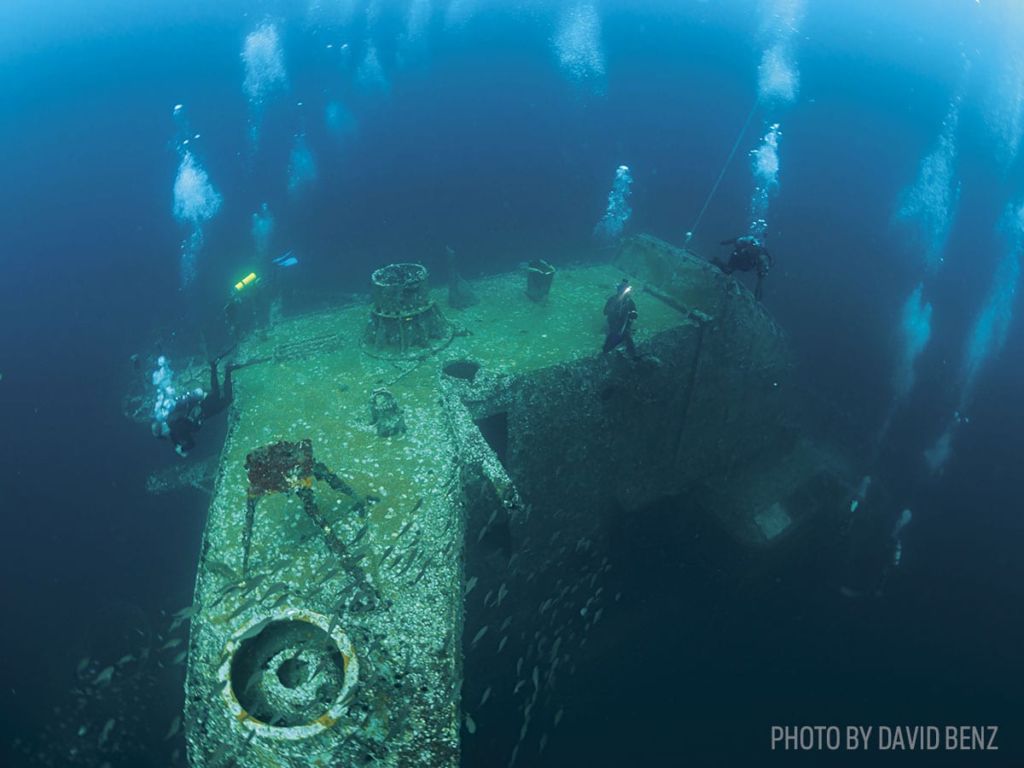
“I knew even before it went down that the sheer size of the wreck would lend itself to becoming its own ecosystem,” says Freeland, who watched the ship sink and was one of the first divers to explore it. “The wreck was immediately populated with bottom-dwelling and reef fish, and it wasn’t long before the pelagics found it. It is not uncommon to see whale sharks and manta rays.”
Plan An Appropriate Profile
Because of Oriskany‘s massive scale, regional operators from Pensacola to Alabama have created and adhere to specialized dive plans to ensure safety.
“We treat the wreck as you would a wall in the Caribbean — bottomless diving,” says Freeland. “Unless you’re properly trained and equipped, you just don’t go to the bottom.”
“Using the control tower to orient oneself is key,” says Price. “It is a large structure, but with the consistently good visibility, you can usually see most of it all at once.”
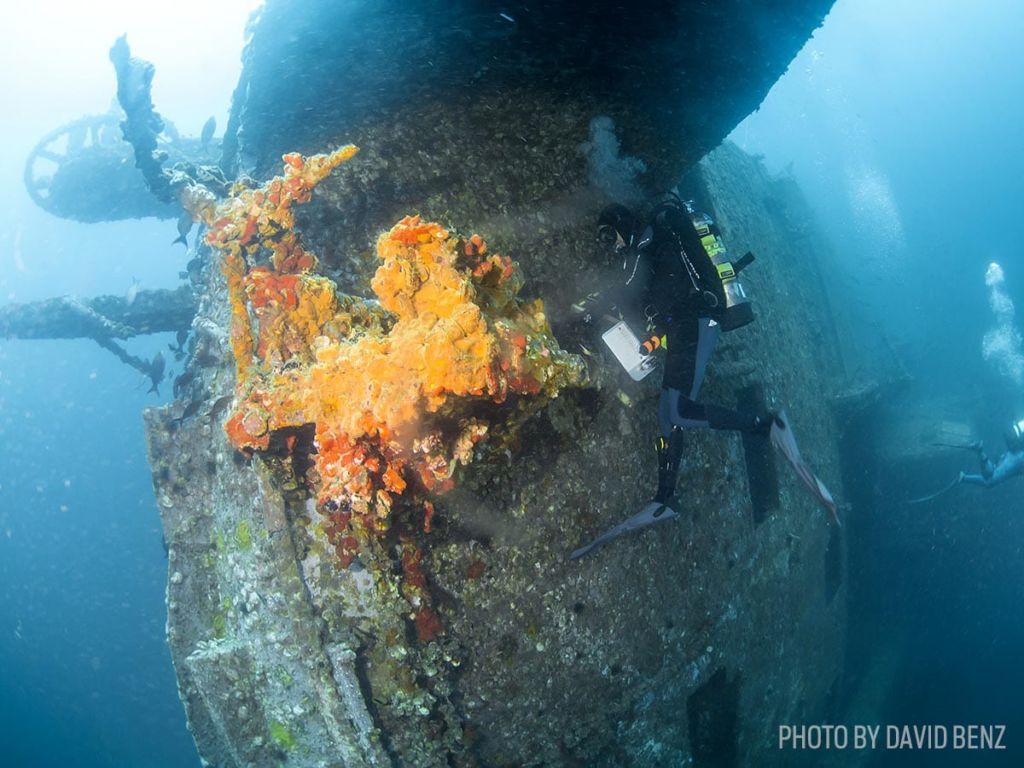
“We suggest people do not leave the superstructure so the wreck is easy to navigate,” Freeland says. “Probably the biggest challenge for rec divers, aside from managing their depth, is managing air consumption. The visibility is usually from 60 to 100 feet, so it’s easy to exceed your planned depth. The flight deck is at 145 feet, and it seems like everyone wants to go there, but any time you dive to these depths, gas management is imperative.”
Price’s favorite route is a tour around the Island, which includes “a great swim-through into the primary flight-control room, then continuing down the structure to my maximum depth below the flag bridge before returning up the outside of the Island.”
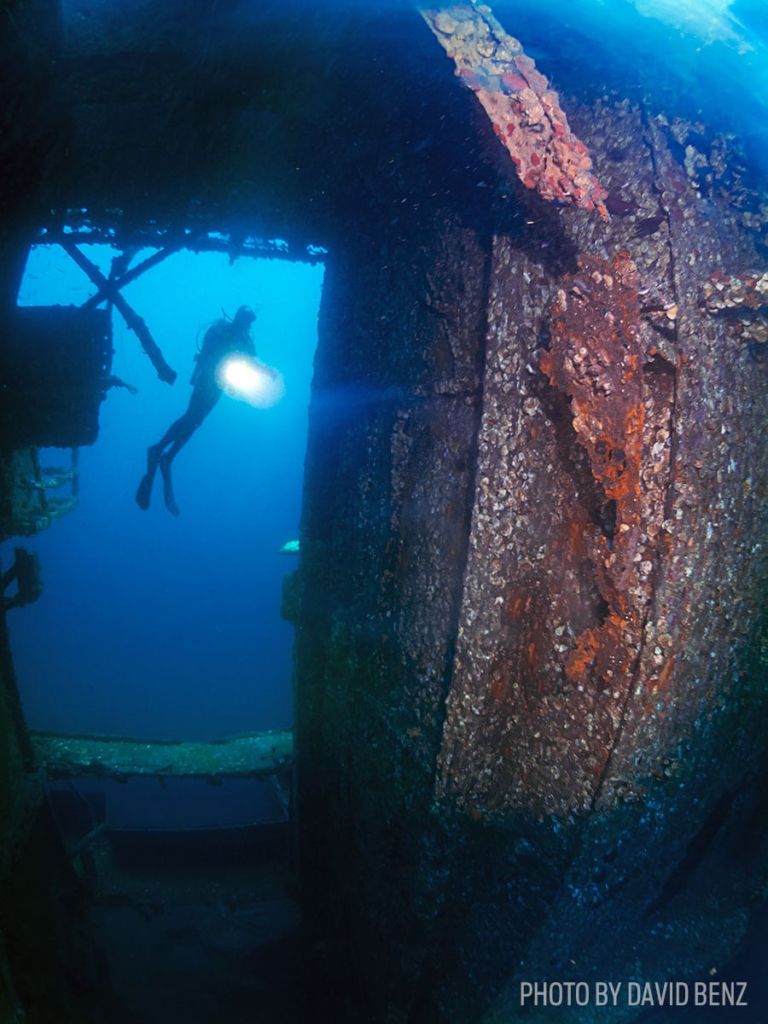
According to Freeland, the Island harbors enough attractions to keep divers enthralled for multiple dives. “As you drift down the mooring line, the first thing to come into view is usually the distinct grated covering of the smokestack. Follow it forward to a rectangular antenna platform, and on the starboard side hanging from the signal yard arm, you will see an American flag above a POW/MIA flag, which are both usually swaying in the current. From there, descend down to the pilothouse canopy, where you can peer into the odd-shaped windows. If you penetrate here, you can follow a stairwell down to the next level or the flag bridge, where you have an unobstructed view out the windows to the flight deck below. Swim outside these windows and circumnavigate the superstructure. Look for mementos left by other divers. There is a sculpture of a sea turtle, a fireman’s helmet, a ship’s bell and numerous caches of offerings to King Neptune.”
Resist the Urge
Maintaining a sense of caution is Freeland’s best advice. A wreck of this size and depth means you can get yourself into trouble.
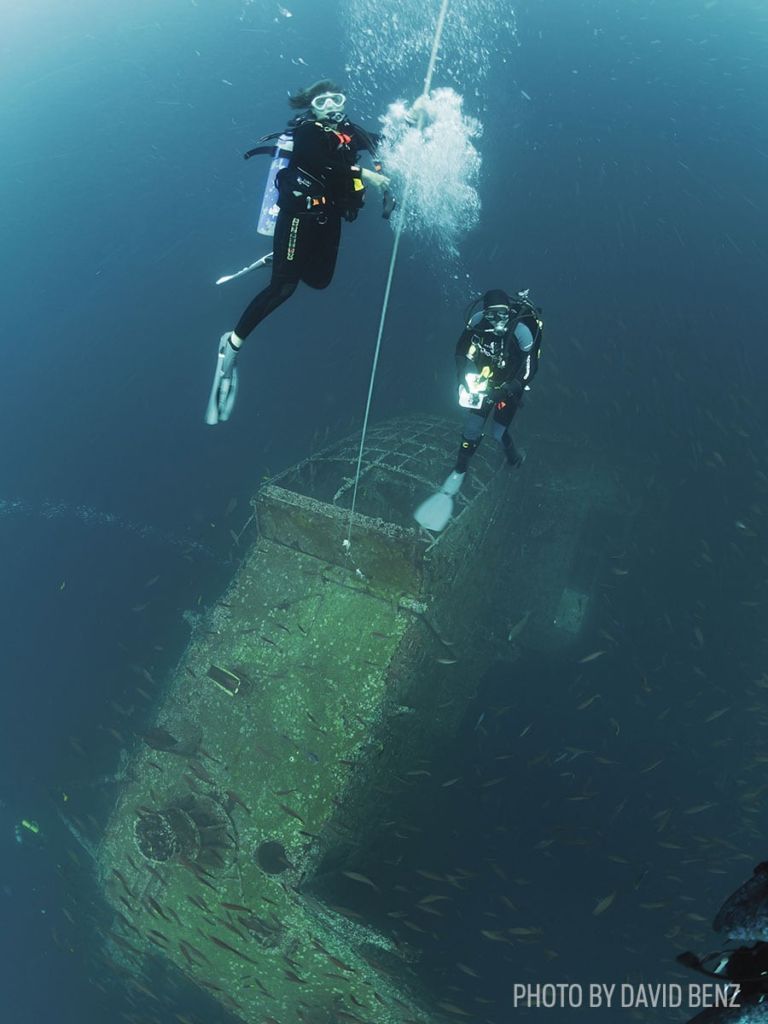
“I believe the depth has been a deterrent to many who consider penetrating and no doubt has saved some lives,” he explains. “The hangar-bay doors are a mere 30 feet beyond the flight deck, but as you look into this massive, cavelike maw of an opening that beckons you into the interior of the hull, you realize you are 175 feet under the ocean on your single aluminum 80, and it is probably not a good idea to go inside.
“Probably the biggest challenge is a penetration of the hangar bays,” Freeland continues. “These spaces were not cleaned of insulation and wiring, so there are many entanglement opportunities inside the hull. Exhaust bubbles alone are enough to loosen rust from the ceiling and create a silt-out, so lines are a must.”
For Price, the inherent dangers of this advanced wreck dive are worth the mitigated risks. “This dive should be on every diver’s bucket list,” he says. “When you finally get there, take the time to savor the experience, because it really is beautiful down there. Where else can you dive on a 911-foot-long aircraft carrier?”





